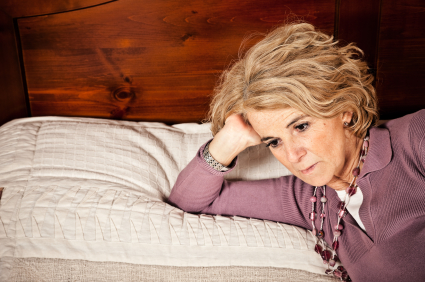Accelerated iTBS Treats Bipolar Depression in 5 Days
Yvette Sheline, of the University of Pennsylvania Perelman School of Medicine, reported that 10 intermittent theta burst stimulations (iTBS) per day for 5 days yielded dramatic improvement in patients with bipolar depression – both immediately after the iTBS as well as at 4 weeks.
Resting-state functional MRI was used to individually target the left dorsolateral prefrontal cortex (dlPFC), the region most anticorrelated with the subgenual anterior cingulate cortex (sgACC).
Intravenous Arketamine As Adjunctive Treatment for Bipolar Depression
Highlights from Posters Presented at the Society of Biological Psychiatry Meeting, April 27-29, 2023 in San Diego
I.D. Bandeira of Stanford University reported on the feasibility and safety of the (R)-enantiomer of ketamine (arketamine) in treating six patients with bipolar depression: “Subjects received two intravenous infusions of arketamine of 0.5mg/kg, followed by 1mg/kg one week later.” Patients improved after the first dose and after “1mg/kg dose, the mean MADRS [Montgomery–Åsberg Depression Rating Scale] total score before the second infusion was 32.0, which dropped to 17.66 after 24h (p<0.001).” All individuals tolerated both doses, exhibiting no dissociative or manic symptoms.
Effectiveness of Repeated Ketamine Infusions for Treatment Resistant Bipolar Depression
Highlights from the International Society for Bipolar Disorders Conference Posters and Presentations, Chicago, June 22-25, 2023
Farhan Fancy, of the University of Toronto, gave 66 highly treatment resistant (unselected) bipolar I or II patients four sub-anesthetic doses of IV ketamine (0.5-0.75mg/kg) over a two-week period. They saw significant reductions in depression, anxiety, suicidality, and disability. Response rates were 35% and remission rate was 20%. “Infusions were generally well tolerated with treatment-emergent hypomania observed in only three patients (4.5%) with zero cases of mania or psychosis.”
“Pharmacotherapy of Bipolar Depression”
Roger McIntyre gave a talk on the “Pharmacotherapy of Bipolar Depression” at the International Society for Bipolar Disorders Conference in Chicago, June 22-25, 2023
He pointed out that, contrary to the many approved agents for mania, there were few FDA-approved drugs for depression in patients with Bipolar Disorders. These approved drugs included: cariprazine (Vraylar); lumateperone (Caplyta); lurasidone (Latuda); quetiapine (Seroquel); and the olanzapine-fluoxetine combination (Symbyax). Other non-approved agents include: lithium, lamotrigine, antidepressants, MAOIs, pramipexole, carbamazepine, ketamine, bupropion+dextromethorphan, amantadine, memantine, and possibly minocycline and celecoxib. Surprisingly, more than 3,000 bipolar depressed patients have been reported to be taking ketamine and that this was not associated with the induction of hypomania or mania.
McIntyre reported on the antidepressant (AD) effects of intra-nasal (i.n.) insulin. The insulin receptor sensitizer metformin had AD effects, but only in those who converted to insulin sensitivity.
McIntyre reported on the mixed effects of the GLP-1 agonists in the prevention of depression (Cooper et al J. Psychiatric Res, 2023). This is of interest in relationship to the bidirectional relationship of diabetes mellitus and depression.
Liraglutide appeared to have an anti-anhedonia effect. Semaglutide had AD and antianxiety effects in animal models of depression.
Recent studies have explored the antidepressant effect of psilocybin. Small studies have indicated that it has rapid onset of AD effects, and, in contrast to ketamine where rapid onset AD and anti-suicidal effects are short lived, the AD effect of psilocybin may be more prolonged.
Ketamine repairs structure and function of prefrontal cortical neurons via glutamate NMDA receptor blocking action, while psilocybin and other psychedelics act via stimulating 5HT2A receptors. One single case study suggested that blocking 5HT2A receptors with trazodone could achieve a rapid onset of AD effects of psilocybin without the psychedelic effects, a very interesting finding that requires replication.
Lithium Corrects Circadian Rhythm Abnormalities in Bipolar Depression

At a recent scientific meeting, researcher Monica Federoff described new findings about lithium’s effects in people with bipolar I disorder, especially regarding circadian rhythms. The 12-week study included 386 participants with bipolar I. Some participants responded well to lithium, but even those whose bipolar disorder did not remit saw improvements in total symptoms, depressive symptoms, and manic symptoms.
Only those who were classified as good responders to lithium treatment showed improvement in circadian symptoms. Their depression improved in the direction of more “morningness,” and the authors suggested that “stabilization of circadian symptoms of depression may be an essential feature of lithium’s therapeutic effects in [bipolar] I patients.”
Lumateperone Improves Bipolar Depression Symptoms

At a recent scientific meeting, Suresh Durgam of Intra-Cellular Therapies, Inc. reported on a study of lumateperone tosylate for the treatment of bipolar depression. Lumateperone tosylate is a mechanistically novel antipsychotic that has been approved by the US Food and Drug Administration for the treatment of schizophrenia.
In a double-blind, placebo-controlled study, the drug showed efficacy in bipolar I and II depression. In a 6-week study, 377 patients received either 42 mg/day of lumateperone or placebo, and 333 (87.4%) completed treatment. Lumateperone treatment significantly improved total scores on the Montgomery Asberg Depression Rating Scale (MADRS) compared with placebo. Item analysis revealed that 8 of 10 MADRS items improved significantly in comparison with placebo by day 29, and all items did by day 43. The largest effects were in reported sadness, apparent sadness, inner tension and reduced sleep. Durgam and colleagues concluded that lumateperone at a dose of 42mg improves a broad range of symptoms in bipolar I and bipolar II depression.
Sunovion Drug in Development Targets 5HT7 and D2 Receptors to Treat Bipolar Depression

At a recent meeting, President and CEO of Sunovion Pharmaceuticals Antony Loebel presented the results of a recent double-blind, placebo controlled study of a drug in development for the treatment of bipolar depression, currently known as SEP-4199. The drug has a fixed ratio of 85% aramisulpride and 15% esamisulpride that target serotonin 5-HT7 receptors and dopamine D2 receptors, respectively. The drug was optimized to amplify the antidepressant effects that come from affecting 5-HT7 while minimizing D2-related side effects.
A total of 344 patients were randomized into three equal groups, in which patients received placebo or a fixed dose of SEP-4199, either 200mg/day or 400mg/day.
The results were promising. After 6 weeks, scores on the Montgomery Asberg Depression Rating Scale (MADRS) were higher among patients who received SEP-4199. The results were very close to statistical significance (p=0.054), with the placebo group showing a large improvement that may have contributed to the lack of difference across groups. In each dosage group, there was greater improvement in MADRS scores than was seen in the placebo group. There was also greater improvement on the Quick Inventory of Depression Symptomatology (QIDS-SR-16) and on the Hamilton Anxiety Rating Scale (HAM-A) in each dosage group compared to placebo.
Loebel concluded that the results showed proof of concept for the use of SEP-4199 to treat bipolar depression, and they plan to continue their research on the drug.
Lurasidone Effective Long-Term in Pediatric Bipolar Depression

At the 2020 meeting of the American Society of Clinical Psychopharmacology, researcher Manpreet Singh presented data showing that children aged 10–17 with bipolar depression had an excellent long-term response to the antipsychotic medication lurasidone (trade name Latuda).
Lurasidone has been approved by the US Food and Drug Administration as a monotherapy treatment of bipolar depression in children and adolescents since 2018. Following a six-week double-blind study comparing lurasidone with placebo in 305 children and adolescents, Singh and colleagues carried out an open-label extension study in which all of the young participants, including those in the placebo group, had the option of taking lurasidone for up to two more years.
Of those, 195 children completed one year of treatment, and 93 completed two years of treatment. Rates of response were 51.0% after the six-week preliminary study; 88.4% at one year; and 91.1% at two years. Rates of remission were 24.3% after the six-week study; 61.3% at one year, and 75.6% at two years, while rates of recovery were 17.7% after the preliminary study; 53.8% at one year; and 73.8% at two years.
This improvement in depression had a strong correlation with improvement in functioning, as measured by the Children’s Global Assessment score (CGAS). The results show progressive increases in rates of response, remission, and recovery with duration of treatment that are associated with improvement in functioning.
In Phase 3 Clinical Trials, Antipsychotic Treatment Lumateperone Is Found Effective in Bipolar Depression
Lumateperone is an antipsychotic medication that is currently approved by the US Food and Drug Administration for the treatment of schizophrenia (under the trade name Caplyta). New studies suggest that the drug is also effective in bipolar I and bipolar II depression.
Lumateperone modulates the activity of the neurotransmitters dopamine, serotonin, and glutamate. It modulates D1 and D2 dopamine receptors, partially activating presynaptic receptors while partially blocking postsynaptic receptors. Lumateperone acts as an antagonist blocking serotonin 5-HT2A receptors, and it augments activity at both NMDA and AMPA glutamate receptors.
Because of lumateperone’s complex pharmacology, it is not clear which of these activities are primarily responsible for its antidepressant and antipsychotic activities.
New research presented at the 2020 meeting of the International Society for Bipolar Disorders showed that lumateperone reduces bipolar depression.
Researcher Susan Kozauer presented research from a six-week study of 377 patients who were randomized to receive treatment with either 42mg of lumateperone (n=188), taken once daily in the evening, or placebo (n=189). The patients had been diagnosed with bipolar I or II disorder and were experiencing an episode of major depression.
Patients taking lumateperone saw significantly greater improvement in depression than those in the placebo group. Among those taking lumateperone, 60% of those who were markedly ill or worse at baseline improved to mildly ill or better, compared to 43% of those taking placebo.
Researcher Suresh Durgam described improvements in specific symptoms that make up the Montgomery-Åsberg Depression Rating Scale (MADRS) in those patients who received lumateperone. The greatest improvements compared to placebo were in sadness, inner tension, and reduced sleep. By the 29th day of the study, 8 of 10 items on the scale had improved significantly compared to placebo, and all items had improved by day 43.
The side-effects profile of lumateperone was presented by researcher Lakshmi Yatham.
Among those taking lumateperone, 8.5% experienced sleepiness compared to 1.1% of those in the placebo group, while 6.4% of the lumateperone group experienced nausea compared to 2.1% of the placebo group. Most effects were mild or moderate in severity. Changes in weight, metabolic measures, extrapyramidal motor effects, and prolactin were minimal in both the lumateperone group and the placebo group.
Editor’s Note: Lumateperone (Caplyta) joins a list of other atypicals that are efficacious in bipolar depression. These include olanzapine-fluoxetine (Symbyax), quetiapine (Seroquel), lurasidone (Latuda), and cariprazine (Vraylar). Lumateperone is currently only FDA-approved for schizophrenia, but approval for bipolar depression should be rapidly forthcoming based on the data presented at the ISBD meeting.
Bipolar depression used to be an orphan diagnosis, with few efficacious treatments. This is now beginning to change, and treating patients with bipolar disorder using antidepressants designed to treat unipolar depression (for which there is little evidence of efficacy) should begin to recede.
Improvement in Bipolar Depression on Open-Label Lurasidone
Researcher Katherine Burdick and colleagues of Brigham and Women’s Faulkner Hospital and Harvard University reported in a poster at the 2019 meeting of the American Academy of Child and Adolescent Psychiatry (AACAP) that youth between the ages of 10 and 17 with bipolar depression who continued taking lurasidone on a non-blind basis following a double-blind placebo-controlled six-week trial of the drug, or those who began taking lurasidone (for those who had been in the placebo group during the trial) saw improvement over a period of one to two years. All of the patients began the extension portion of the study at a dose of 20 mg/day.
Lurasidone appeared to be effective and well-tolerated. In addition, Burdick and colleagues reported a lack of cognitive difficulties in the youth taking lurasidone. Interestingly, a measure of visual learning substantially and progressively improved over the course of the study.



